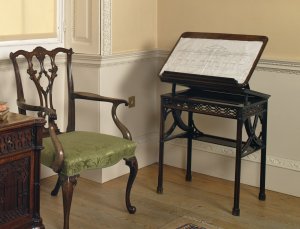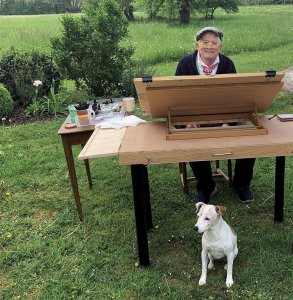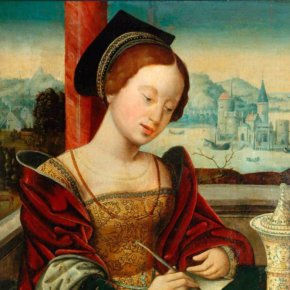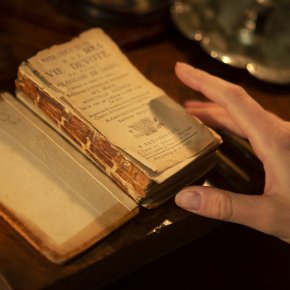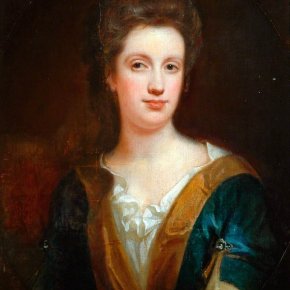17th April 2020
Home working Georgian-style
Many of us have set up our homes to allow us to work remotely during this coronavirus pandemic. But while we’re in lockdown, perhaps we can take inspiration from the fact that we’re not the first to practise ‘home working’. The grand 18th century homes that so many of us enjoy visiting today (when we’re able to) got there long before us.
Working from home was a common practice for the owners of these mansions. But it wasn’t a case of using the dining table, kitchen surface or the spare bedroom for them. Some important business was conducted in bedrooms and dressing rooms – but that is a different story!
Each of the many rooms in a house from the 1700s had its purpose and each room had its own specific furniture made in the latest fashion to accommodate the most up-to-date thinking. The example in the photograph (below) of an innovative work-station or ‘convenient table’, gifted to Fairfax House by Noel Terry, was made sometime around 1750 to meet the home working needs of the day.
The library, lined with books, was the place to work. Expanding global trade, scientific understanding and exposure to new cultures and ideas resulted in a more diverse range of subjects for publishers to create heavily illustrated and often very large books. Having these books in a private library demonstrated your excellent tastes and up-to-date thinking and created opportunity for creativity and conversation with friends and acquaintances.
This increased globalization also brought new fashions, materials and professions to the home and office. The furniture industry expanded enormously – new books of ingenious designs and the latest fashions were launched, and interior designers and makers became highly sought after. Fine furniture began to be made in exotic fine-grained woods. Mahogany from Jamaica was imported into Britain in huge quantities – and unhappily an integral part of Britain’s global economic network involved the transatlantic trade in enslaved people from West Africa.
Some furniture designs from the time are still in use today as David Hockney has demonstrated working from his desk at home in Normandy during the current crisis (picture, below). His drawing table bears a strong resemblance to designs published in 1793 by Thomas Sheraton, one of Britain’s most famous furniture designers.
© DAVID HOCKNEY
John Cobb, a London cabinet make, was the first to introduce the so-called ‘convenient table’ into fashion. These were pieces of furniture that ‘draw out in front, with upper and inwards rising desks, so healthy for those who stand to write, read or draw.’
The design allowed large and heavy books to be handled and consulted safely as well as providing space for drawing. The ratcheted double rising top created a flexible slope to hold a book or artist’s paper. At a time of improved knowledge of the human body and effects of a rich diet, copious drinking and a more sedentary way of life it also encouraged the benefits of working whilst standing. Something to bear in mind!
The Fairfax House table was purchased by Noel Terry for his house at Goddards on Tadcaster Road in 1934 from Mallett’s a London antiques dealer, still in operation today. Craftsmen during the 1700’s did not usually mark their furniture with their names or company logo’s, so it’s maker is unknown.
Noel Terry filled Goddards with English furniture and clocks from the 1700’s. He bequeathed his collection to York Civic Trust in 1980. It is not know whether he used this desk as it was intended, but from the number of small objects and fragments of paperwork found in other pieces of furniture, Terry’s collection was most certainly used on a daily basis.
Archives
- December 2024
- October 2021
- August 2021
- July 2021
- June 2021
- May 2020
- April 2020
- March 2020
- February 2020
- January 2020
- November 2019
- October 2019
- July 2019
- February 2019
- January 2019
- December 2018
- November 2018
- November 2017
- August 2017
- May 2017
- December 2016
- August 2016
- June 2016
- April 2016
- March 2016
- February 2016
- January 2016
- December 2015
- November 2015
- August 2015
- June 2015

